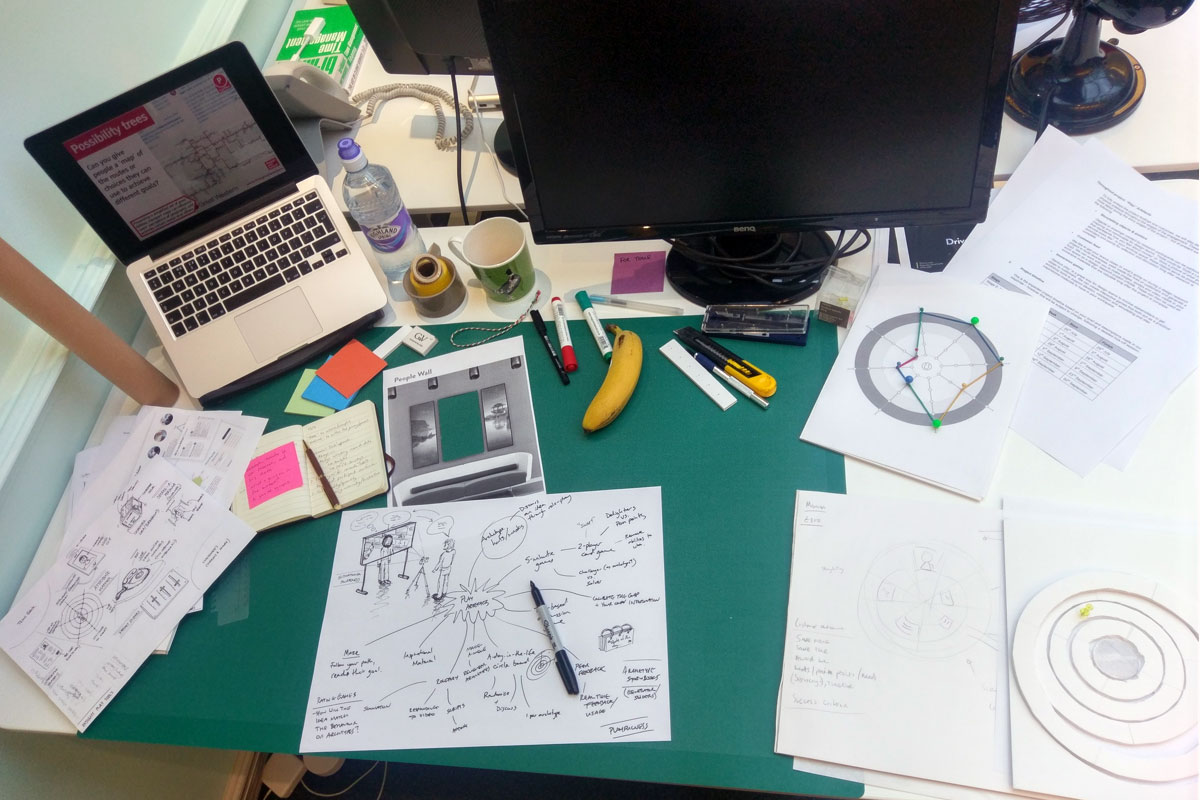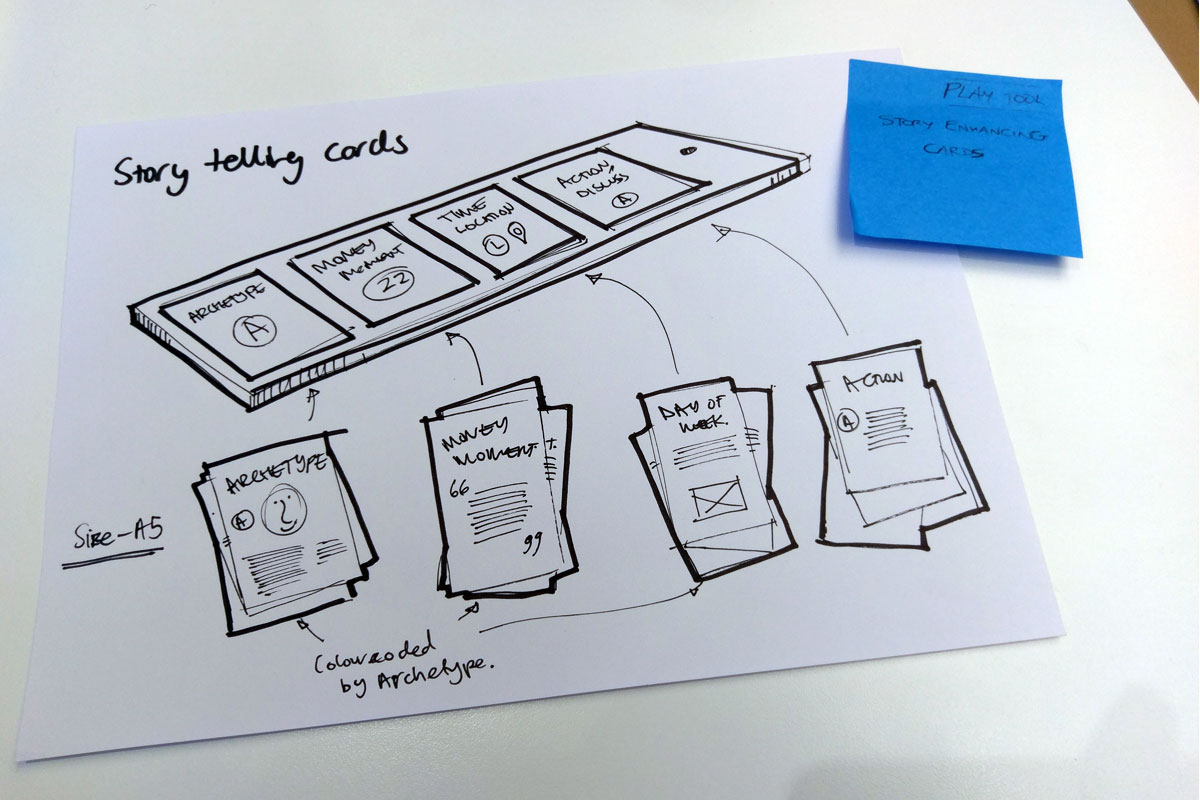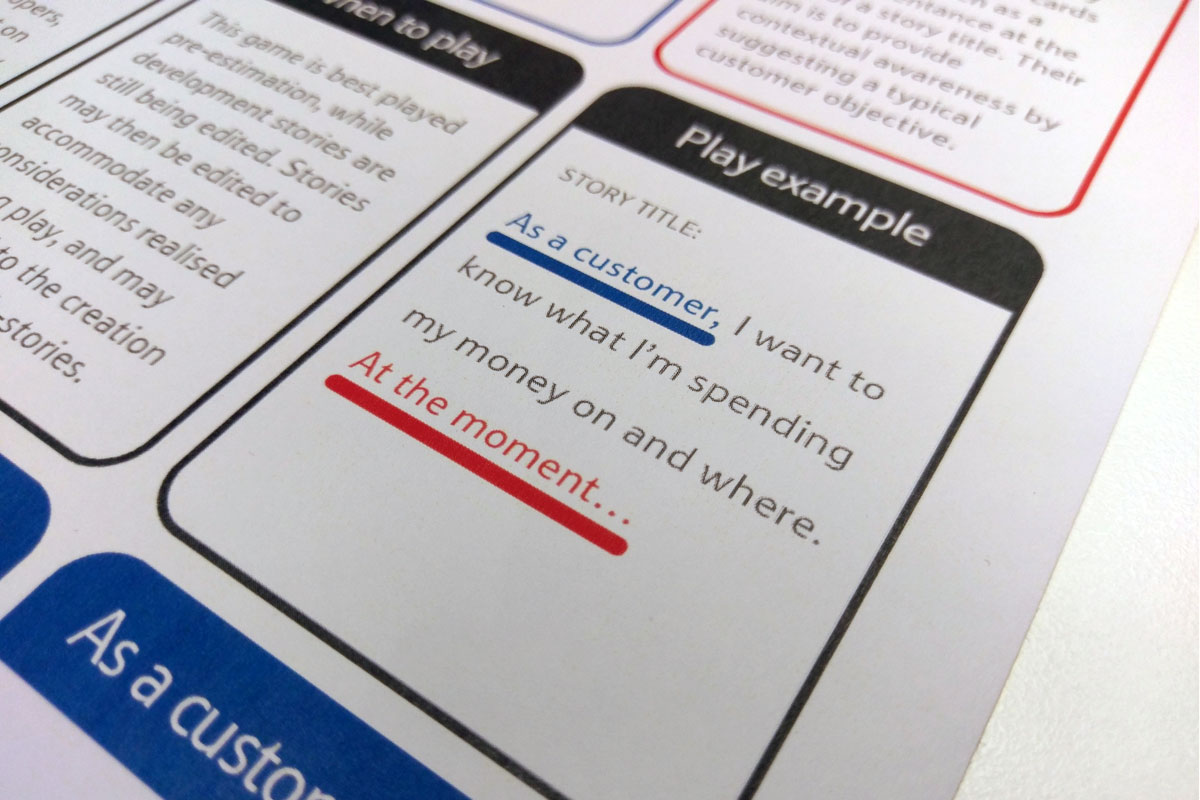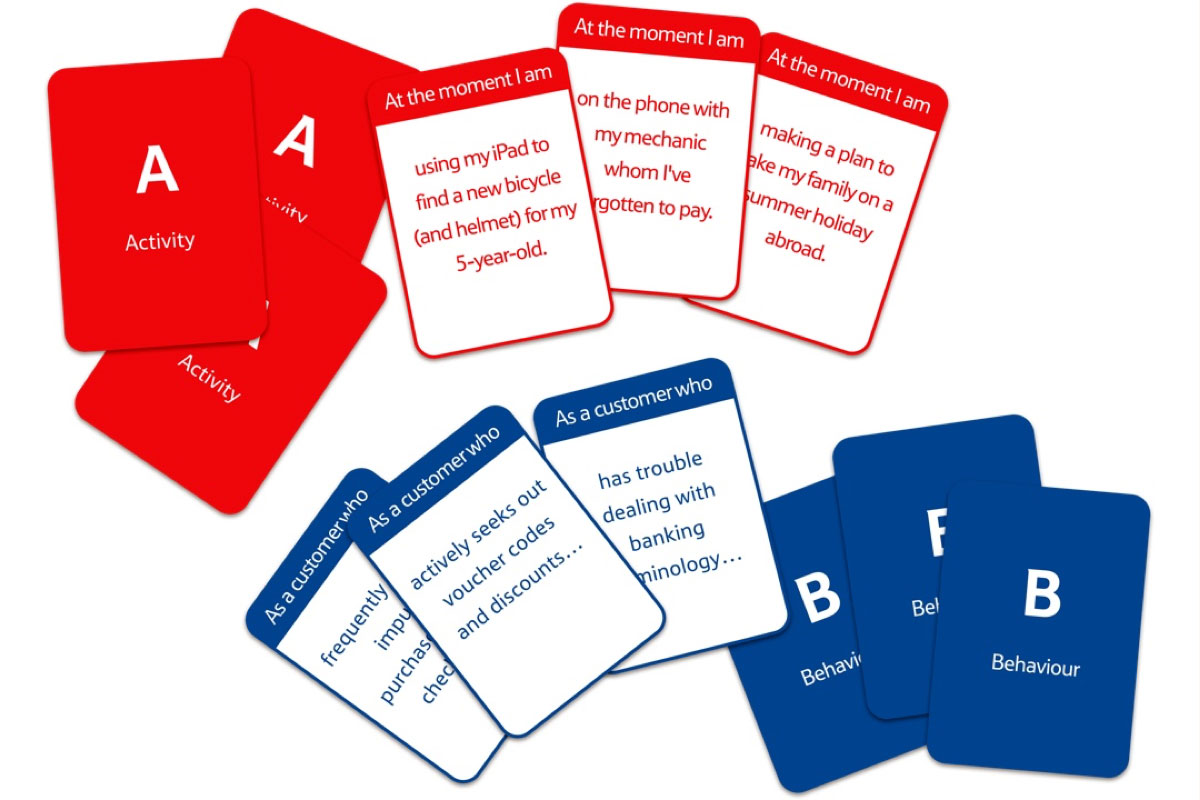Design Tools
Developing a set of 'play tools' to support the UX team inside a national bank.
- Design research
- Customer insights
- Visual communication
Date
September - October 2016
Working with
- Tesco Bank
Tools and methods
- Public research
- Design games
- Workshop facilitation

Pretotype for a 'live customer insights' wall
I researched and prototyped objects designed to trigger empathy within a design team by bringing the customer's voice directly into the design process.
While working with Nile, I was assigned the task of exploring and developing a set of prototype “design play tools” to inhabit a client's design space. This required me to investigate new, undocumented ways in which to present the client with information from user research.
For this project I developed a number of creative methods for gathering user insights, creating unique 'design games' and playful tools for stimulating group discussions.

Idea development prototypes
The purpose of the first project was to explore people’s attitudes and approaches towards managing their finances. At the beginning of the project, I helped to develop a set of archetypes based on people's financial behaviour. This activity was be highly interesting, as it required a combination of psychological analysis of the research data followed by creative illustrations.
I was then given the task of researching and developing a set of prototype “play tools” to inhabit the client's design space, to help remind the design team about their customers/users. This required me to investigate new, non-traditional ways in which to present the client with user research insights.
The purpose of this project was to explore peoples' attitude and approach towards handling their personal finances. One of the major outcomes from this project was a set of behavioural archetypes based on peoples' attitudes and actions towards personal finance.
I was asked to research and develop a set of prototype 'play tools' to inhabit the client's design space, serving to remind designers about the people for whom they are designing. This required me to investigate new, undocumented ways in which to present the client with information from user research.

Story telling cards

Game instructions
Throughout this project I developed several "play tool" concepts, taking them from drawing to prototype. They ranged in technical di cult, from cardboard boxes through to a custom-built augmented reality app, eachof which were trialled.
I was able to seek assistance from colleagues, and often invited them to take a look at the latest idea or prototype. Their feedback proved valuable, as it allowed me time to improve before submitting an idea to the client.
Gradually, following several meetings with the client, I was told that they had a strong preferences for a prototype based on a deck of cards. I therefore decided to pursue this idea further, to create a more relevant "play tool".
While becoming acquainted with the nature of project, I was first assisted by developing a set of archetypes. This involved discussion with a fellow service designer and a contracted consultant who was working on the project. I found this activity to be highly interesting, as it required a certain degree of psychological analysis when processing the data from the research.
Following this activity, I was challenged to spend some time developing a set of "Play tools" for enabling the client's design team to help bring the customer’s voice into the design space, going beyond traditional report outputs. As I had joined the project late into the process, I found that I was unable to meet with the client. This meant that I had the added challenge of attempting to invent objects without knowing the people for whom I was designing – particularly di cult in terms of designing for empathy. As a starting point, I set out to explore a variety of di erent approaches using some of the information I learned from the 'design game' lectures from the previous semester at university.
I performed some desk research on design games and data visualisation styles and attempted to sew the output from the research analysis into the design of the play tools. My design approach was to create objects that allowed space for discussion on the information displayed by the archetypes. The ultimate goal of the tools was to raise the level of empathy within the design team, bringing them closer to understanding the background and needs of their own customers.
I performed some desk research on design games and data visualisation styles and attempted to integrate the output from the research analysis into the design of the play tools. My design approach was to create objects that allowed space for discussion on the information displayed by the archetypes. The ultimate goal of the tools was to raise the level of empathy within the design team, bringing them closer to understanding the background and needs of their own customers.

I created a deck of 'insight play cards'
Upon learning that the client's design team were in fact a digital product development team, I was able to draw upon my previous knowledge as a digital product designer to understand their background and way of working.
I was able to access the client's upcoming development backlog, to see the titles of planned features. I was immediately able to recognise that the development team followed an agile methodology to product development, using the structure:
As a way in which to cause synthesis with the client's agile development environment, I decided upon creating a set of "Story enriching" cards. These cards would be able to provide enhanced detail surrounding the user featured in each development story title. Following a client meeting, I learned that the client saw potential and intended to explore the use of this game further.
Learnings
Working with both physical and digital materials gave me the opportunity to compare the merits of each, as I sought to understand which would be the most pragmatic method in which to provoke empathy among the design team. The challenge of provoking empathy was perhaps the greatest difficulty I faced while working at Nile. I came to the conclusion that there is no ideal method for this – triggering empathy is primarily dependent on the individual who is to feel it, and less about the person for whom they are to understand.